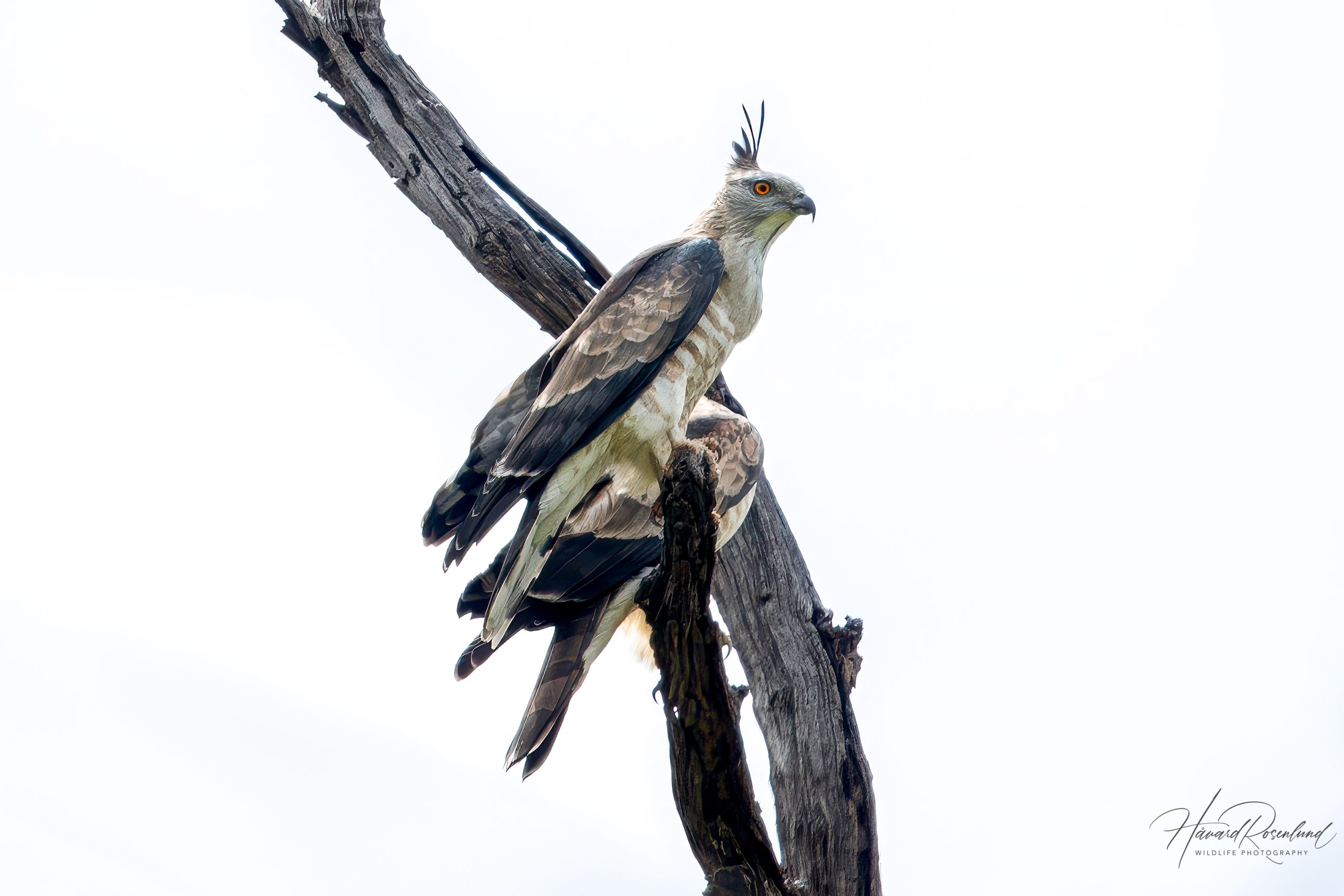Description
Jerdon’s baza (Aviceda jerdoni) is a distinctive bird of prey found in parts of the Indian subcontinent and Southeast Asia. This raptor typically measures around 41–48 cm (16-19 in) in length, with a wingspan of approximately 109–117 cm (43-46 in). It is characterized by a distinctive crest and a brownish back. The underparts are white with broad brown horizontal streaks. The male has a grey face, whereas the female as a brown face. Jerdon’s baza can be distinguished from other birds of prey by its unique plumage and the pronounced crest, which is often raised when the bird is alert. There are several subspecies that differ somewhat in size and coloration.
Diet & habitat
This species prefers subtropical and tropical moist lowland forests, often found at the edges or in clearings. Jerdon’s baza feeds mainly on large insects, particularly grasshoppers and cicadas, but also consumes small birds, reptiles, and amphibians. Its hunting technique involves a mix of soaring and sallying out from a perch to capture prey, displaying a degree of agility that allows it to snatch insects mid-air.
Behavior
Jerdon’s baza is generally solitary or found in pairs, though it may occasionally be seen in small family groups. It is known for its silent, unobtrusive behavior, often going unnoticed in its natural habitat. The bird’s flight is slow and buoyant, with occasional deep, flapping wing beats, and it often glides on thermals. Despite its broad range, this species is relatively scarce, making sightings notable for bird watchers and researchers.
Nesting
The breeding season for Jerdon’s baza varies geographically but typically occurs from February to May. The species builds a small, platform-like nest made of sticks, high in the canopy of large trees. The female usually lays 2–3 eggs, which are incubated primarily by her, though both parents are involved in feeding the chicks. The incubation period lasts about 32–35 days, and the fledglings leave the nest approximately 40-42 days after hatching.
Status
Jerdon’s baza is currently listed as least concern on the IUCN Red List. It is uncommon or rare throughout its range and its population is believed to be declining, and its status could change to a more threatened status. The primary threats include habitat loss due to deforestation and fragmentation of forested areas. Conservation efforts are crucial to preserve its natural habitats and ensure sustainable populations.





